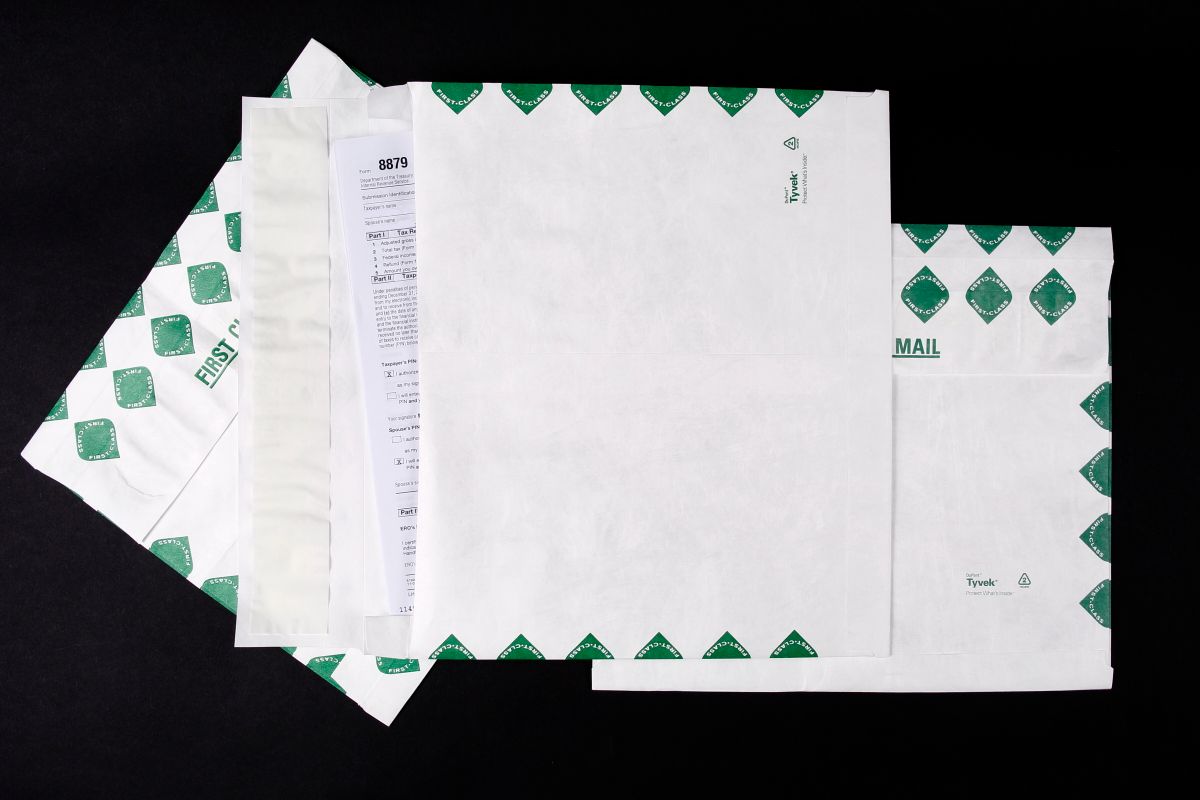
DuPont’s Tyvek has been around for many years and has a reputation for durability and functionality in the mailing world. It’s a synthetic material which is also used as a first layer to wrap houses which gives you an idea of the durability part.
Tyvek is more expensive than regular paper envelopes but it has one property that makes it well worth considering for mailings; it’s a lot lighter than paper. Most large envelopes used for mailings are either 28# or 32# weight. Tyvek’s most common weight is 14#. So simple math says it’s half the weight or less of paper envelopes. Going to the next ounce in postage costs around 21 cents per ounce. So for 1,000 envelopes, you’re saving around $210 per thousand in postage by avoiding the increase in weight of the mail piece – pretty impressive.
The sleek look and smooth feel of Tyvek is pretty much guaranteed to get your mail opened. It prints really well – even with full ink coverage. Your brand will stand out and be noticed and the recipient will understand that this is not just any mailing, but rather something important that deserves his attention.
It’s virtually impossible to tear which makes it ideal for mailing anything that has rough or sharp edges; like a spiral bound booklet for instance. It’s also water resistant which ensures it will hold up and look better when delivered especially if it’s raining!
Tyvek is available in a wide range of sizes; from small, credit card size envelopes up through jumbo sizes as large as 22 x 27 inches. Tyvek envelopes are also available with side expansions up to 5 inches for bulky packages.
And, perhaps surprisingly, Tyvek is 100% recyclable. A nationwide recycling program collects used envelopes and recycles them into other useful materials. Tyvek itself is contains an average of 10% post-industrial waste content.
